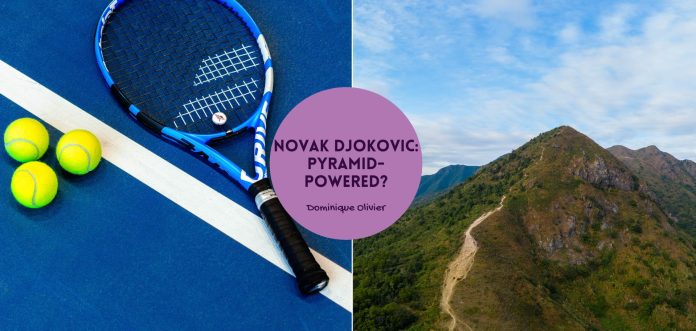Pyramids? In Bosnia? One man wants the world to believe it’s true – and a little pushback from the scientific community isn’t doing much to deter his growing band of enthusiasts.
If you believe one version of the story, then the area of Visoko in central Bosnia and Herzegovina is dotted with naturally-occurring (if slightly odd-looking) hills. If you believe the other version, then this area is actually home to some of the largest and oldest manmade pyramids in the world.
The hills have lies
Located just northwest of Sarajevo, the Visoko area boasts a rich history, having served as Bosnia’s capital during the Middle Ages. Atop the nearby Visočica hill, you’ll find the ruins of a medieval fortress, itself built on the remains of earlier Roman observation posts, which were built on even older settlements. It’s a classic case of history piling up like a stack of old books – except this time, with flatiron hills as the backdrop.
According to geological experts like Paul Heinrich of Louisiana State University, these flatiron formations are nothing extraordinary, popping up all over the globe, from Vladivostok’s “Russian Twin Pyramids” to plenty of other spots in the region. But in 2005, a new and decidedly less academic narrative emerged, thanks to one Semir Osmanagić. A businessman with a flair for the dramatic, Osmanagić launched a media campaign claiming Visočica hill and its neighbors weren’t just natural formations, but part of a sprawling ancient pyramid complex. And not just any pyramids – these were, according to him, crafted by the Illyrians somewhere between 12,000 BC and 500 BC. Or, depending on which interview you catch him in, by a culture going back a staggering 34,000 years.
Osmanagić’s claims don’t stop at the surface. He asserts that a network of tunnels – dubbed the Ravne tunnels – snakes beneath the hills, covering almost four kilometres. But the real pièce de résistance? Osmanagić believes the largest hill, which he’s dubbed the “Pyramid of the Sun,” emits “standing waves” that supposedly travel faster than light, providing evidence of a “cosmic internet” for intergalactic communication. Yes, you read that right – Wi-Fi for the cosmos.
It’s not just the “Pyramid of the Sun” that’s been rebranded. Nearby hills now sport equally evocative names like the “Pyramid of the Moon,” “Love,” “Earth,” and “The Dragon,” courtesy of Osmanagić. If this sounds to you like something out of a fantasy novel rather than a geology textbook, you’re not alone.
In 2006, Osmanagić shared that an international squad of archaeologists from Australia, Austria, Ireland, the UK, and Slovenia had joined his efforts to excavate and explore the pyramids. Several of the named archaeologists denied any involvement and said they had never set foot on the site. An “Oxford archaeologist” that Osmanagić mentioned turned out to be an unqualified undergraduate. His foundation’s website boasted the backing of a British Member of Parliament, though the named individual didn’t match any actual sitting MP.
Speaking of sceptics
The so-called “Bosnian pyramids” have faced sharp criticism from the academic community, with the European Association of Archaeologists branding the project a “cruel hoax”. Scholars are not just sceptical – they’re concerned about the harm being done to genuine archaeological and paleontological treasures in the area. Among the casualties are a medieval Bosnian castle, Roman fortifications, and other ancient remains that risk being overshadowed – or outright destroyed – by Osmanagić’s controversial digs.
Since kicking off excavations in 2006, Osmanagić has gone so far as to reshape one of the hills to resemble a stepped pyramid, a move that hasn’t exactly won over experts. In fact, many academics have called for an immediate halt to government funding for the project, arguing that the ongoing disruptions are doing more harm than good to the region’s authentic historical resources.
According to Nadija Nukić, a former employee at one of Osmanagić’s archeological parks, some of the “ancient carvings’ on stones at the site might not be quite as old as advertised. In an interview with a Bosnian newspaper, Nukić claimed that the carvings were added by Osmanagić’s own team after the stones were unearthed. Unsurprisingly, Osmanagić has denied the accusation, standing by the authenticity of the inscriptions and his interpretation of their origins.
All those in favour
Despite the skepticism of scientists and experts worldwide, the Bosnian Pyramid claims have found support closer to home. Local authorities have funded Osmanagić’s excavations and even arranged school trips to the hills, where children are introduced to this speculative version of their heritage. The site has also become a tourist hotspot, drawing curious visitors who are eager to see what all the fuss is about.
Osmanagić claims the site got off to a roaring start, drawing in 200,000 tourists during its first year. Buoyed by this early interest, he sought funding from Malaysian investors in 2006 to build an archaeological park around the so-called pyramids. His ambitions didn’t stop there – he also pitched plans for similar parks around other “ancient monuments”, all of which scientists firmly identify as natural features. Say what you want about Osmanagić, but at least he knows how to stick to a theme.
While attendance at the Bosnian hills has dipped from its early heyday, the souvenir sellers stationed near the site still report steady business. And Osmanagić has doubled down on diversifying the experience, introducing events designed to heighten the site’s spiritual appeal. Meditation sessions in the Ravne tunnels are a regular feature.
In August 2016, Osmanagić claimed 5,000 visitors had come to the archaeological park since June of that year. In the same year, his foundation expanded the operation with Ravne 2 Park, which now attracts tens of thousands of visitors annually. The park has gained the support of both the Visoko municipal government and the Zenica-Doboj canton, with the Visoko municipal council officially designating it as a park of significance. It’s not just tourists who frequent the area; locals and visitors from nearby towns also make their way to Ravne 2.
Then of course, there’s a certain famous face that drops in quite frequently to draw from the pyramid’s mystic power.
Enter Novak Djokovic
Over the past few years, tennis GOAT Novak Djokovic has become a regular visitor to Osmanagić’s archaeological park in Visoko, often turning to the site during both the highs and lows of his career.
In July 2020, during the pandemic backlash surrounding his Adria Tour (where several players tested positive for COVID), Djokovic visited the Pyramid of the Sun to find some mental reprieve. Just a few months later, after a dramatic disqualification during the US Open round of 16, he returned to the park for another reset.
By 2021, the Serbian tennis legend appeared to make the park part of his pre-tournament routine, visiting Ravne 2 in Visoko ahead of his victorious runs at the 2022 French Open and Wimbledon.
Perhaps the clearest indication of how much Djokovic values the site came in January 2022. After the highly publicised Australian visa debacle that saw him deported from the country, Djokovic sought solace once again at the archaeological park. For the record-breaking 24-time Grand Slam champion, it was a place to mentally and physically recharge after one of the most challenging experiences of his career, and he was often spotted meditating in the excavated tunnels under the hills.
In July 2022, the archaeological park unveiled two new tennis courts – one hard surface and one clay. Fresh off his 2022 Wimbledon victory, Novak Djokovic was there to mark the occasion, delivering a speech in which he shared his vision of a generation of “next level” tennis players who would be trained at the cosmically powered, pyramid-adjacent courts.
Does drawing strength from a cosmic pyramid count as doping? I’m not quite sure – but I’ll be keeping an eye on any superpowered tennis players making their debut out of Bosnia in the coming years.
About the author: Dominique Olivier

Dominique Olivier is the founder of human.writer, where she uses her love of storytelling and ideation to help brands solve problems.
She is a weekly columnist in Ghost Mail and collaborates with The Finance Ghost on Ghost Mail Weekender, a Sunday publication designed to help you be more interesting.
Dominique can be reached on LinkedIn here.





In 1998 my wife and I visited the Pyramid of the Sun near Mexico City. I got a few vibes -mainly of revulsion, as this was the site of a daily human sacrifice (to ensure the sun came up each day). Any newer Pyramids of the Sun need to up their game (so to speak) if they want to reach the touristy fame of the Mexicans. But please shy clear of human sacrifices…